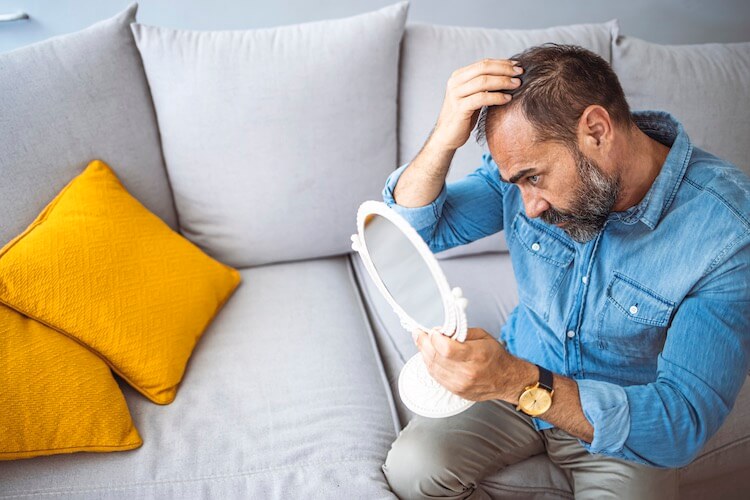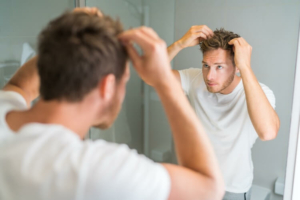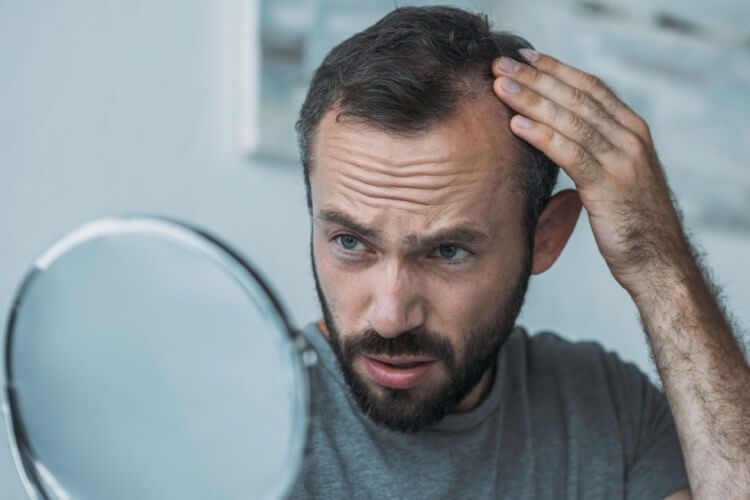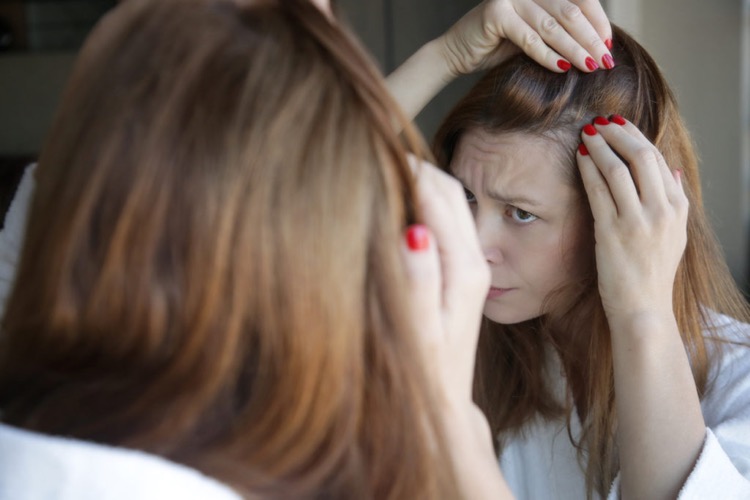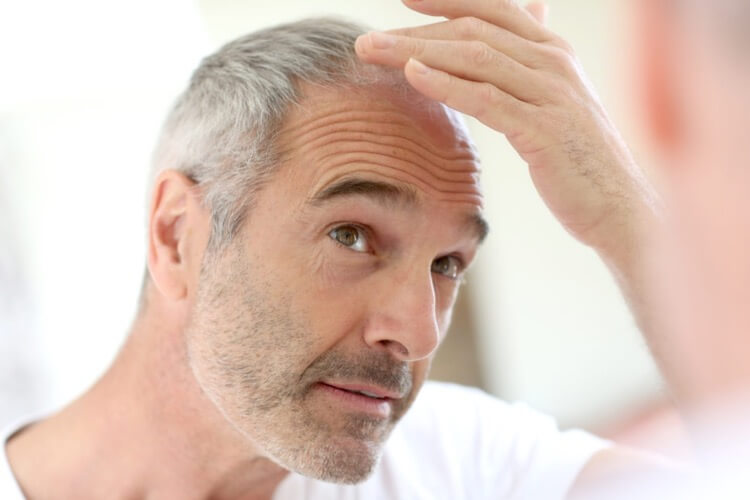Does Stress Cause Hair Loss?
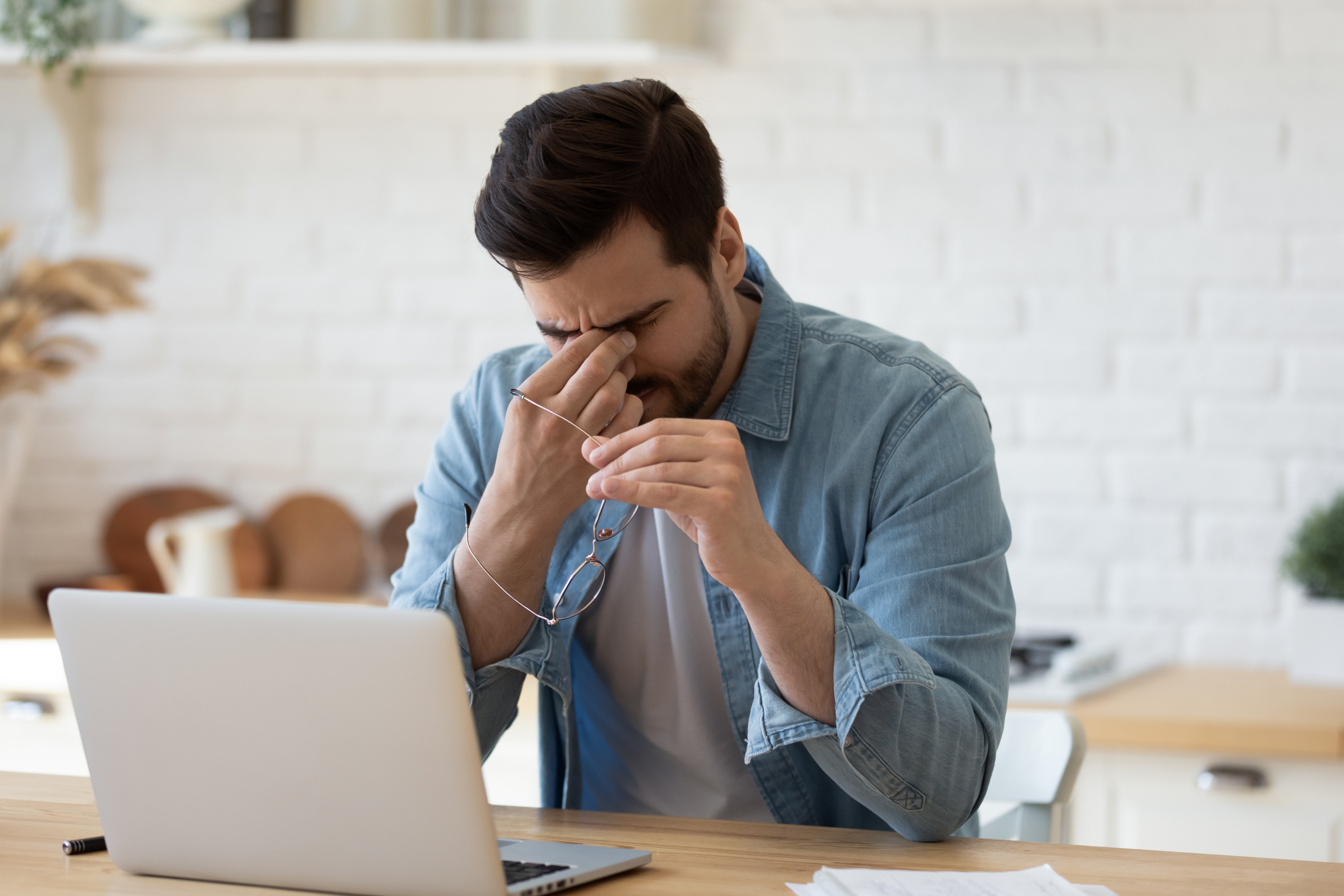
People often joke around about how stress causes hair loss.
“I was so stressed I was losing my hair.”
“All these bills have me pulling out my hair.”
“This new job is making my hair fall out.”
But for many, stress causing hair loss is no laughing matter. So does stress really cause hair loss? Yes, stress can cause you to lose your hair. And when you’re trying to keep as much hair on your head as possible, managing stress becomes a top priority.
Stress: The Good and the Bad
When you feel your heart rate rise because you’re running late or you start to sweat during a work presentation, what you’re feeling is stress. This emotional and physical tension is part of the body’s natural response to potentially dangerous or new situations.
Known as the body’s stress response or the “fight-or-flight” response, stress can be positive. This emotion keeps you alert and driven, pushing the body to work harder and think faster. Stress works well for short periods, giving you enough energy to power through a challenging event. Long-term (chronic) stress, however, compromises your well-being – and may cause you to lose your hair. (01)
The Physiological and Psychological Effects of Chronic Stress
The stress response comes from your body’s autonomic nervous system, the same system responsible for your heart rate, vision changes, blood pressure, and breathing.
During a stressful situation, you may experience the following:
- Increased heart rate
- High blood pressure
- Faster breathing
- Sweating
- Tremors
With chronic stress, you can see these additional symptoms:
- Headache
- Muscle tension or pain
- Chest pain
- Restlessness
- Insomnia
- Fatigue
- Stomach upset
Chronic stress can lead to health problems like high blood pressure, skin conditions, obesity, and heart disease. (01)
Why Stress Causes Hair Loss
To understand why stress causes hair loss, you first need to know the basics of hair growth. Hair grows in a cyclical pattern, with new hair growth to replace older hair once it falls out. Every healthy strand of hair typically grows in three primary stages:
- Anagen Phase
- Catagen Phase
- Telogen Phase
Anagen Phase
The anagen phase is also known as the “Growth Phase.” During this phase, a strand of hair grows from the hair follicle. As it grows, sebaceous glands condition and lubricates the hair. Hair grows at an average rate of six inches a year for most people. At any given time, about 80% of hair is in the anagen phase. This phase of rapid growth usually lasts about 2 to 8 years.
Catagen Phase
Unlike the anagen phase, the catagen phase lasts only briefly. The catagen phase lasts about ten days, though some people may have hair that remains in the catagen phase for up to 4 weeks. This phase accounts for about 1 to 2 percent of a person’s hair. It is at this point that growth stops, and the hair follicle shuts down to rest. (02)
Telogen Phase
Hair falls out of the follicle during the telogen phase. The telogen phase is aptly named the “resting phase” because the hair follicle shuts down for a short rest. During this phase, the follicles no longer supply nutrients, which causes the air to fall out.
The hair that’s lost is usually hairs that are at the very tail end of the telogen phase, called the exogen phase. Approximately 15% of hair is in the telogen phase at any given time. The scalp sheds an average of 100 hairs a day. With about 100,000 hair follicles on the scalp, the daily loss of 100 hairs is negligible. (03)
Hair Loss and Stress
Hair growth is determined by the stem cells within the follicles. Chronic stress affects the adrenal glands. A recent study published in the journal Nature–with support from the NIH’s National Institute of Arthritis and Musculoskeletal and Skin Diseases (NIAMS), showed how the hormone corticosterone is impacted by the adrenal glands, which respond to stress. (04)
Stress increases corticosterone levels. Corticosterone prevents the stem cells within hair follicles from activating hair growth. Instead, hair follicles remain in an extended resting phase – in the telogen phase.
Telogen Effluvium
Telogen effluvium is the primary condition responsible for hair loss during stress. Stress can cause a greater than usual amount of hair to suddenly shift to the telogen phase all at once. During telogen effluvium, many strands stop growing, and hair follicles become dormant. Fortunately, hair typically regrows within 6 to 9 months. (05)
Signs of Telogen Effluvium
With telogen effluvium, hair loss is often abrupt. However, hair loss may begin only a few months after experiencing significant stress. Hair follicles prematurely enter the telogen phase, and the follicles may take up to 3 months to start regrowing hair.
Unlike other hair conditions, like alopecia areata, the hair loss pattern typically experienced by individuals with telogen effluvium is diffuse hair loss. In other diagnoses like female pattern hair loss or alopecia areata, hair falls off in a patchy pattern, or they may experience a widening of the hair part. In telogen effluvium, hair loss occurs throughout the head resulting in an overall thinning rather than bald spots. (05)
Other Hair Loss Conditions Caused by Stress
Telogen effluvium is the second most common type of hair loss for men and women, but it’s not the only hair loss condition due to stress. Chronic stress may also indirectly cause the following conditions:
Alopecia Areata
Although alopecia areata (AA) is an autoimmune disease, It results in hair loss. In alopecia areata, the immune system mistakenly targets hair follicles, causing patchy hair loss throughout the scalp. Stress may be a trigger for the immune sustain, resulting in further hair loss. There’s no cure for AA, but some prescription hair medications can help manage hair loss. (06)
Trichotillomania
During a bout of trichotillomania, known as “hair pulling disorder,” an individual may feel compelled to pull or tug at their hair. People with trichotillomania have episodes of the disorder during times of significant stress. Trichotillomania causes patches of bald areas where the hair pulling occurred. (07)
Does stress cause male pattern baldness?
Male pattern baldness, also known as androgenic alopecia, is not caused by stress. The condition is caused by genetics. Unlike telogen effluvium, androgenic alopecia is not temporary. With early treatment, however, individuals with androgenic alopecia can slow hair loss or regrow hair.
In general, hair loss can be caused by a variety of factors. Finding the reason for your hair loss is important in addressing the issue. Our Happy Head licensed, board-certified dermatologists can help you determine the best approach to your hair loss including a custom topical hair regrowth treatment that’s made for you. Our hair regrowth products are made for both men and women, so there’s a solution for everyone. Contact us to learn what Happy Head can do for you.
Resources:
(02) https://www.ncbi.nlm.nih.gov
(05) https://www.ncbi.nlm.nih.gov


